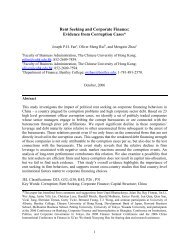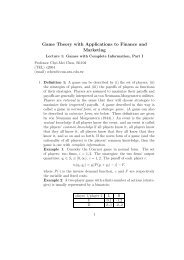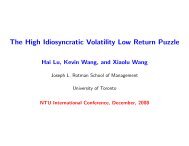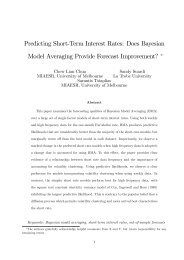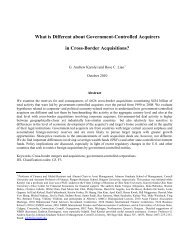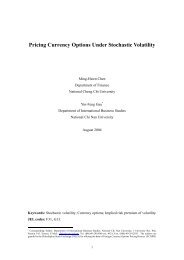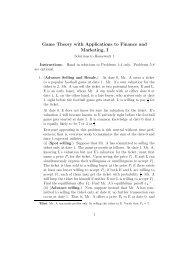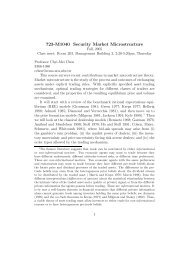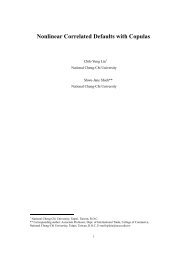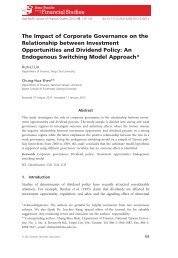Game Theory with Applications to Finance and Marketing
Game Theory with Applications to Finance and Marketing
Game Theory with Applications to Finance and Marketing
You also want an ePaper? Increase the reach of your titles
YUMPU automatically turns print PDFs into web optimized ePapers that Google loves.
Now, if at some x < v, F j (x) > 0, then there must be some y ≤ x such<br />
that y is a pure-strategy best response for firm j against F i (·), which<br />
leads <strong>to</strong> a contradiction because y+v is obviously a better pure-strategy<br />
2<br />
response than y for firm j! Thus if firm i has F i (v−) = 0, then firm<br />
j must also have F j (v−) = 0, or equivalently, F j (x) = 0 for all x < v.<br />
But then, lemma 3 implies that both F i (·) <strong>and</strong> F j (·) must jump at v,<br />
which implies another contradiction: given ∆F i (v) > 0, for tiny δ > 0,<br />
pricing at v − δ is strictly better than pricing at v for firm j. Thus we<br />
conclude that both firms must r<strong>and</strong>omize below v!<br />
Lemma 6. For i ∈ {A, B}, if at a < v, F i (a) > 0, then for all<br />
b ∈ (a, v), F i (b) > F i (a).<br />
Lemma 6 says that in equilibrium the distribution function must be<br />
strictly increasing at all prices that are close <strong>to</strong> but lower than v. More<br />
importantly, this says that if firm i r<strong>and</strong>omizes at p i < v, then not only<br />
all x ∈ (p i , v) are best responses for firm i, in equilibrium firm i must<br />
r<strong>and</strong>omize over each x ∈ (p i , v).<br />
To see that lemma 6 is true, suppose <strong>to</strong> the contrary that F i (·) is<br />
flat on an interval [x, y], i.e. F i (x) = F i (y) > 0, a ≤ x < y < v,<br />
<strong>and</strong> F i (z) < F i (x) for all z < x. It is important <strong>to</strong> note that x is a<br />
best response for firm i. 9 In this case, none of the prices p j contained<br />
in the interval [x, y) can be pure-strategy best responses for firm j:<br />
pricing at p j+y<br />
is a better response that p<br />
2 j for firm j! It follows that<br />
F j (·) has <strong>to</strong> be flat on the interval [x, y), <strong>and</strong> moreover, ∆F j (x) = 0.<br />
A contradiction now arises because form firm i’s perspective, x is by<br />
assumption a best response but is now a worse response than, say, x+y<br />
2<br />
from firm i’s perspective!<br />
20. Equipped <strong>with</strong> the above lemmas, now we can rigorously derive the<br />
mixed strategy NE. Let Π i be firm i’s equilibrium expected profit. By<br />
9 By Lemma 4, F j (·) is continuous over the region (−∞, v). Thus firm i’s payoff function<br />
is continuous in its (pure-strategy) price p i on (−∞, v). Note that there must exist some<br />
z ∈ [a, x) such that F i (·) is continuous <strong>and</strong> strictly increasing on the interval [z, x). This<br />
means that every price contained in [z, x) is a pure-strategy best response for firm i, <strong>and</strong><br />
by the fact that firm i’s payoff function is continuous in its (pure-strategy) price p i on<br />
(−∞, v), so must be x! This proves that x has <strong>to</strong> be a pure-strategy best response for firm<br />
i.<br />
19



